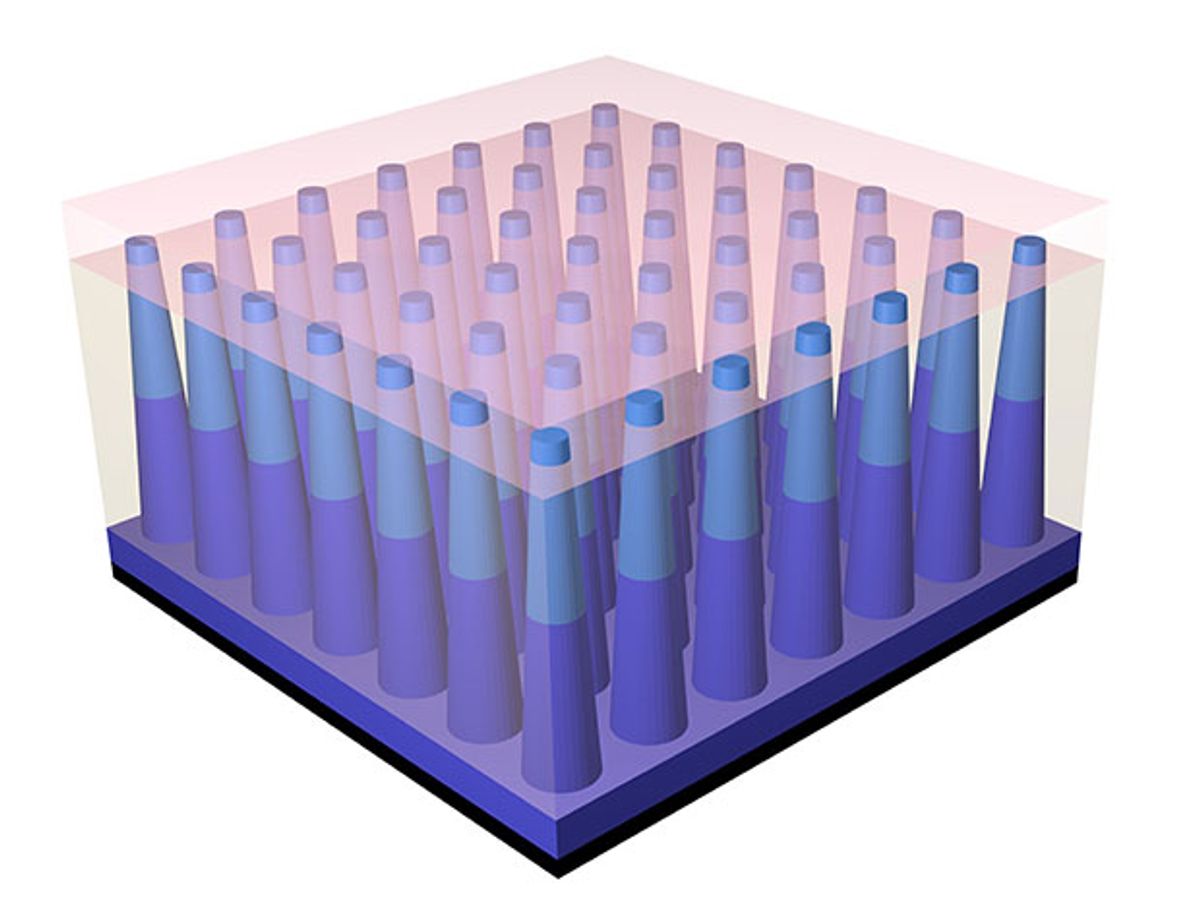Researchers at the Technical University of Eindhoven, in the Netherlands, have staked the claim to the highest conversion efficiency yet achieved with a nanowire-based solar cell: 17.8 percent. While this new mark edges out the previous record of 15.3 percent, it still falls well short of the 46-percent theoretical limit for these cells.
The record-breaking achievement was actually reported in the doctoral dissertation of Dick van Dam. As a result, the work has not yet been published. When we contacted van Dam to get more details on the device he had fabricated, he explained that he was limited with regard to what he could say about it until publication.
However, in the press release, van Dam did express hope that the record he has achieved will fall quickly. He expects that to be the case within the next couple of years. With the fairly recent development of the first nanowire-based solar cells and the high ceiling for their performance, that's a reasonable expectation.
Three years ago, this blog reported on the work of a joint Danish-Swiss research team that proposed a way to surpass the Shockley-Queisser limit for the maximum efficiency of a solar cell by employing nanowires. The Shockley-Queisser limit posits that only 33.7 percent of all the solar energy hitting a solar cell with a single p-n junction can be converted into electricity.
The nanowire-based solar cell proposed by the Danish-Swiss team was going to be able to surpass this limit by exploiting the nanowires' unique ability to concentrate light to intensities up to 15 times greater than normal. Because the diameter of a nanowire is smaller than the incoming wavelength of light, resonances occur in the intensity of the light surrounding the nanowires. These resonances concentrate the light right at the spot where it is converted into electricity.
Since that research, there’s been a steady stream of new uses of nanowires in solar cells that promise higher and higher energy conversion efficiency.
Van Dam did say that the nanowire solar cells he fabricated operate in the same way as regular solar cells, but that the solid layer that normally absorbs the light and converts it into electricity is simply replaced by a layer of vertical nanowires.
In general, says van Dam, improving the performance of these cells mainly involves increasing the internal radiative efficiency of the cells, which correlates to decreasing the number of defects. “This is basically processing optimization,” he added in an email interview with IEEE Spectrum.
“For commercial availability, the process needs to be optimized as well, in order to lower the production costs,” van Dam explained. “Fabrication of nanowire solar cells without using the thick substrate (which is probably possible) would be an important step forward in this direction.”
Dexter Johnson is a contributing editor at IEEE Spectrum, with a focus on nanotechnology.



